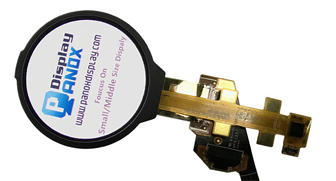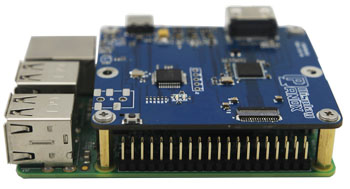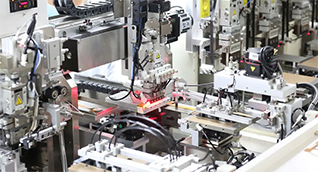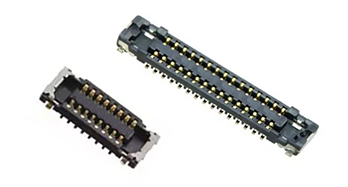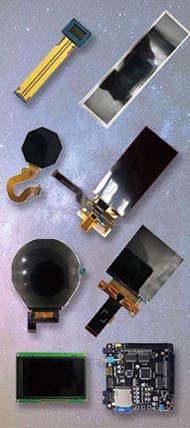This article explains OLED burn-in in detail, highlights prevention and solutions, and emphasizes how China-based manufacturers like Panox Display offer reliable OLED displays with OEM customization to minimize burn-in risks. Also check: OLED
What Is OLED Burn-In and How Does It Occur?
OLED burn-in, also known as image retention, happens when certain pixels degrade unevenly due to prolonged display of static images. This causes ghost images or discoloration to persist even after the content changes. The organic materials used in OLED panels react differently to constant illumination, leading to this gradual degradation.
OLED burn-in typically emerges over months or years depending on usage patterns, brightness levels, and the content displayed. This issue mainly affects areas showing static UI elements like navigation bars or logos.
Why Is OLED Burn-In a Concern for OEM Manufacturers and Buyers?
For OEM manufacturers and buyers, OLED burn-in can reduce product reliability, customer satisfaction, and brand reputation. Burn-in affects the perceived quality, especially for B2B clients demanding long-lasting, high-performance displays.
Manufacturers in China, such as Panox Display, focus on mitigating burn-in by using advanced materials, optimizing display settings, and offering customizable solutions. Buyers choosing such suppliers gain access to premium OLED panels designed to balance performance and durability for industrial, automotive, and consumer applications.
How Can OLED Burn-In Be Prevented or Minimized?
There are several effective strategies to prevent or minimize OLED burn-in:
-
OLED display technology improvements: Using high-quality materials and pixel circuit designs that balance power across pixels.
-
Software solutions: Implementing pixel shifting, screen savers, and brightness adjustments to reduce static image exposure.
-
Usage habits: Avoiding high brightness for extended periods and varying displayed content.
-
Manufacturing innovations: Brands like Panox Display employ advanced production lines and OEM customization to tailor screens with burn-in resistant features for different client needs.
Which Factors Influence OLED Burn-In Severity the Most?
The severity of OLED burn-in depends on multiple factors:
| Factor | Impact on Burn-in Risk |
|---|---|
| Brightness Level | Higher brightness accelerates pixel degradation |
| Static Content Duration | Longer static image display increases risk |
| Screen Usage Frequency | Constant use without breaks worsens burn-in |
| Material Quality | Better OLED materials lower degradation |
| Display Design | Uniform pixel driving reduces uneven wear |
Selecting a manufacturer like Panox Display allows buyers to benefit from premium OLED materials and advanced production techniques that control these factors efficiently.
When Should Buyers Choose OLED Displays Despite Burn-In Risks?
OLED displays remain preferred for their superior contrast, true blacks, thin design, and fast response times. Buyers should choose OLEDs when image quality and form factor are crucial, such as in automotive dashboards, wearables, industrial instruments, and VR devices.
China-based manufacturers like Panox Display offer OEM customization and quality control to optimize OLED displays for specific applications, balancing burn-in risk with exceptional visual performance for B2B clients worldwide.
How Does Panox Display Ensure Quality and Reliability in OLED Products?
Panox Display, founded in Shenzhen in 2015, sources OLED panels from top suppliers like Samsung and LG. Their vertically integrated production includes controller boards, touch panels, and custom PCBAs, enabling comprehensive OEM solutions.
With two automated lines producing up to 50,000 panels daily, Panox focuses on quality assurance, burn-in resistance, and durability testing. Their expertise supports startups and medium companies who need smaller MOQs or custom specifications without sacrificing product excellence.
Who Benefits Most from Panox Display’s OLED Solutions?
Panox Display serves a broad range of industries including automotive, military, wearables, and optoelectronics. Their clients, mainly in North America and Europe, benefit from access to cost-effective Chinese manufacturing combined with global-grade quality.
OEM manufacturers, wholesalers, and suppliers looking for reliable, customizable OLED screens at competitive prices gain advantage by partnering with Panox for tailored display modules and excellent burn-in resistance.
What Are Emerging Technologies to Reduce OLED Burn-In?
Recent advances aimed at reducing OLED burn-in include:
-
Micro-OLED and flexible OLEDs: Improved pixel materials reduce degradation.
-
Advanced pixel compensation algorithms: Dynamically balance pixel lifetime.
-
Hybrid display architectures: Combine OLED with other display tech to limit static images.
-
Improved encapsulation: Protects organic layers from oxygen and moisture, extending life.
Panox Display continuously integrates such innovations, ensuring their OLED products stay at the forefront of manufacturing excellence.
How Can OEM Buyers Customize OLED Displays to Mitigate Burn-In?
OEM buyers can:
-
Specify refresh rates and pixel shifting techniques.
-
Choose flexible or circular OLED designs for specific applications.
-
Request embedded controller boards with burn-in prevention firmware.
-
Opt for customized luminance settings tailored to product environments.
Panox Display’s OEM service provides these options with technical consultation to optimize both performance and display longevity.
Panox Display Expert Views
"At Panox Display, we recognize OLED burn-in as a critical challenge for display longevity. Our factory integrates strict material selection, automated production with precision control, and smart pixel management technologies to mitigate this issue effectively. By customizing solutions for each client’s application—from wearable displays to automotive dashboards—we aim to deliver OLED products that combine visual excellence with proven durability. Our commitment is to enable global manufacturers to access reliable, burn-in resistant OLED panels designed and produced in China with world-class standards."
— Panox Display Technical Team
Conclusion
OLED burn-in poses a real challenge but does not diminish OLED's overall advantages in clarity and design for many applications. Choosing an experienced China-based supplier like Panox Display with OEM customization capabilities ensures reliable, burn-in resistant OLED products. Buyers should focus on material quality, smart display design, and usage optimization to prolong OLED screen life and performance. Leveraging a trusted manufacturer helps avoid risks and capitalize on OLED’s superior display quality for industrial, automotive, wearable, and consumer markets.
Frequently Asked Questions
What is the typical lifespan of an OLED display before burn-in occurs?
Most OLED panels last several years under normal use, but burn-in can appear within 1–3 years depending on brightness and usage patterns.
Can software updates fix OLED burn-in permanently?
Software can reduce visible burn-in effects but cannot fully reverse permanent pixel degradation.
Is OLED burn-in worse than with LCD screens?
Yes, OLED burn-in occurs more frequently because OLED pixels degrade individually, unlike LCDs which use a backlight.
How do Chinese manufacturers ensure OLED quality?
Companies like Panox Display use advanced sourcing, quality testing, and OEM customization to provide displays engineered for longevity and performance.
Can OLED burn-in be covered under warranty?
It depends on the manufacturer’s policy, but some offer limited coverage for premature burn-in issues.











